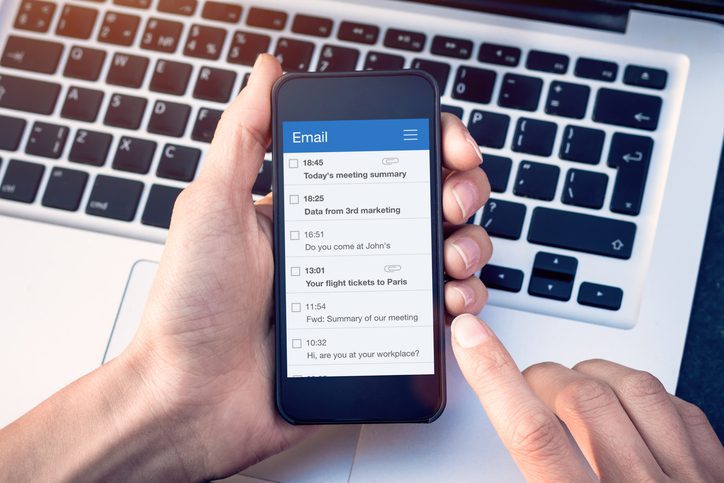
Learning to love your inbox
Take a look at your inbox right now. How many unread or unanswered emails are in there? If your answer leaves you feeling overwhelmed, you’re not alone. But, your inbox holds more importance than you may think.
Experts say that in the next year, we will spend 30 to 40% of our workday addressing emails, and that today’s business professional receives and/or sends about 115 emails each day. No doubt that’s a lot to keep up with.
Let’s do the math: If each email takes on average about two minutes to either create or respond to, that turns out to be 230 minutes a day, or about four hours.
What we’ve heard from our clients is they’re working in their inboxes early in the morning, during lunch, before dinner, and right before bed. Some have said emails are like coffee – they’re both addictive! (For the record, we find coffee much more satisfying!)
There is some hope to the inbox inefficiency madness. Before you let your inbox start to manage you, learn how you can manage it.
Strategies for email efficiency
1. Empty your inbox daily – This has actually been the most challenging for me to implement because I like having everything in one searchable box. I think I know where everything is, but do I really? The problem is that this method increases the likelihood for missing an email that is important. I’ve adopted the two-minute rule that was discussed in David Allen’s book ‘Getting Things Done: The Art of Stress-Free Productivity.’
Allen suggests that the first thing you do is evaluate whether the email is actionable or not actionable. If the email is actionable, determine whether you can do it in two minutes or less. If so, do it immediately. If the action can be delegated to someone who can do it better, delegate it. If you anticipate it will take more than two minutes, move it to a processed inbox and come back to your emails later when you have time to process them.
If the email is not actionable, delete it or put it into a reference folder or folders. Although not recommended, I do have multiple “reference” folders created that include admin, clients, projects, etc. It’s a matter of preference and what will work for you.
2. Less is more – Be intentional about sending less, and receiving less emails. In the book ‘The Hamster Revolution: How to Manage Your Email Before it Manages You,’ authors Tim Burress and Ken Blanchard talk about how to deliberately pause before pushing the ‘reply all’ button and ask if the email needs to be sent to everyone on the original distribution list.
We continue to see a proliferation of “reply all” emails going out, and the interesting thing is that Burress’ research says that almost 80% of people say that others send too many ‘reply all’ emails, but when asked if they send too many only 13% fessed up to overusing the ‘reply all’ button. People don’t like doing it, but don’t think they’re guilty.
If you’re trying to send less with the goal of receiving less emails, think about who you’re sending the email to before you push the ‘reply all’ button.
3. Quality over quantity – Ever get those emails that ramble on and it takes two minutes to identify the reason for the email? With emails, being concise is key. People have short attention spans, so get to the point in the first paragraph. Another suggestion is to use the subject line to effectively communicate the purpose of the email. Connecting the subject line closely with the content/purpose of the email will make it more searchable should you have to go back into your process inboxes and/or reference folders.
There are a lot of best practices out there to work smarter. If you have any email management ideas that have worked well for you, we’d like to hear from you!
